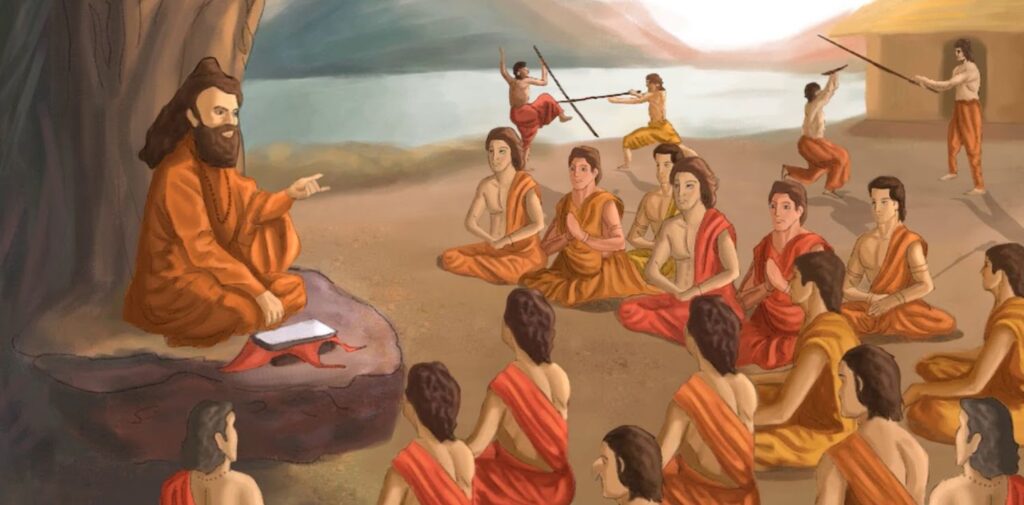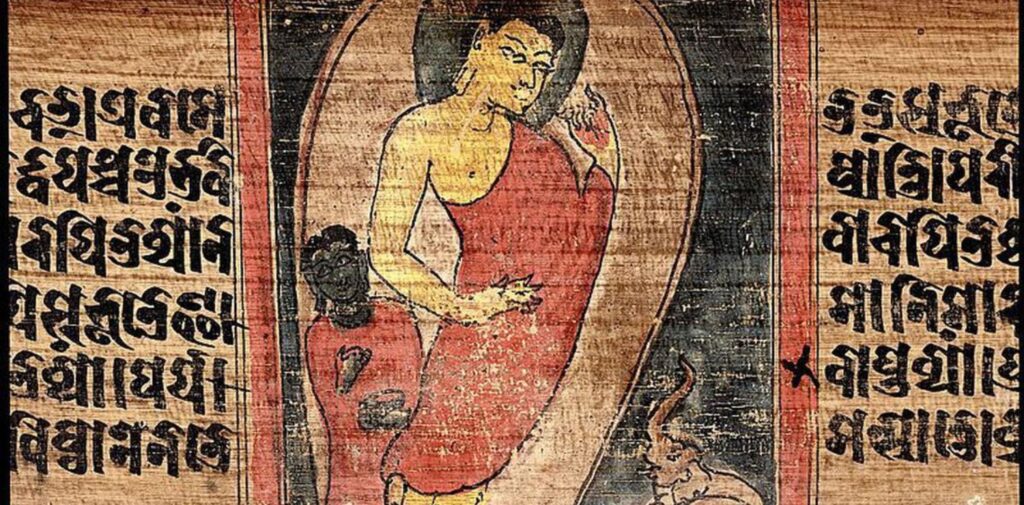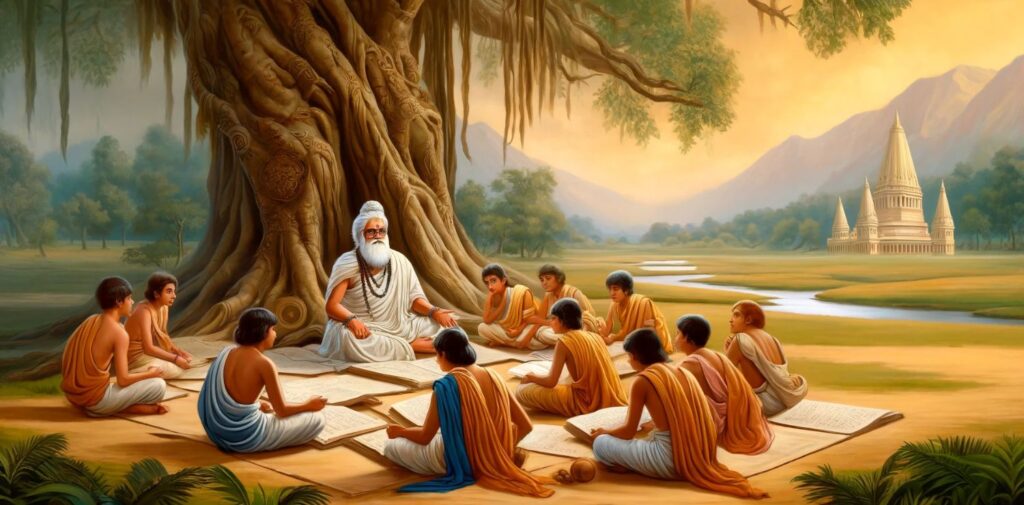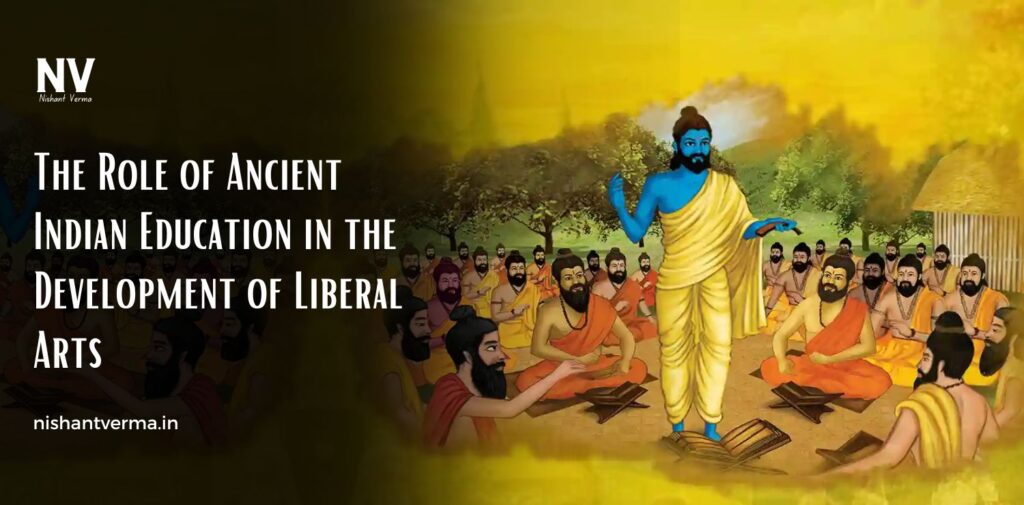Ancient Indian education holds a significant place in the history of intellectual development, not only in India but also across the world. The educational practices that emerged thousands of years ago laid the groundwork for much of the modern liberal arts tradition. These practices were based on a deep understanding of the human mind, knowledge, and the interconnection between various disciplines, and they continue to influence contemporary education systems. This article explores how ancient Indian education contributed to the development of the liberal arts, focusing on key elements such as holistic learning, philosophy, art, literature, and sciences.
The Roots of Ancient Indian Education
Ancient Indian education was deeply embedded in the culture, philosophy, and spirituality of the time. The system was not limited to merely academic knowledge but also emphasized the development of character, wisdom, and the understanding of the universe. Education was seen as a lifelong process aimed at achieving knowledge in all its forms—spiritual, practical, and intellectual.
India’s educational institutions, such as the famous Nalanda and Takshashila universities, were hubs of intellectual learning. They attracted students from various parts of the world who came to study subjects ranging from philosophy and religion to mathematics and astronomy. These institutions were vital in nurturing the liberal arts traditions, which aimed to develop a well-rounded individual capable of thinking critically and engaging with the world in a meaningful way.

Holistic Education and the Concept of Liberal Arts
1. Philosophical Foundations of Education
The core of ancient Indian education was based on the idea that knowledge should be pursued not just for material gains but for spiritual and intellectual growth. The teachings of great philosophers like the Upanishadic rishis, Buddha, and the great thinkers of the early Buddhist and Jain traditions focused on the relationship between the self, society, and the universe. These teachings encouraged students to seek understanding beyond the physical world and to explore the underlying truths of existence.
In these early educational systems, learning was not confined to one discipline. Rather, students were encouraged to study a wide range of subjects that would foster the development of their character, intellect, and wisdom. This interdisciplinary approach is very much in line with what we now refer to as the liberal arts, which aim to cultivate a broad and versatile education that promotes critical thinking, creativity, and a well-rounded understanding of the world.
2. Balance of Practical and Theoretical Knowledge
Ancient Indian education emphasized both theoretical and practical knowledge, recognizing that one could not exist without the other. While subjects such as philosophy, ethics, and literature nurtured the mind, practical knowledge in areas such as medicine, mathematics, engineering, and agriculture provided students with the skills necessary to contribute to society.
This balance between theory and practice is a hallmark of liberal arts education, which aims to create individuals who are not only knowledgeable but also capable of applying their knowledge in real-world situations. By combining these two types of knowledge, ancient Indian education helped students understand both the material world and the metaphysical realm, leading to a well-rounded and enriched worldview.

Contribution of Ancient Indian Texts to the Liberal Arts
1. Philosophical Texts and the Exploration of Ideas
One of the most important contributions of ancient Indian education to the liberal arts is the vast array of philosophical texts produced during this time. The Upanishads, the Bhagavad Gita, the teachings of Buddha, and the works of great scholars like Patanjali and Panini are rich sources of wisdom. These texts explore not only questions of morality, ethics, and spirituality but also logic, language, and the nature of knowledge itself.
The Upanishads, for example, delve into the concept of self-realization and the nature of the universe, exploring ideas that continue to inspire philosophical discourse worldwide. These texts encourage a deep understanding of reality, self-awareness, and the importance of intellectual and spiritual growth. Such philosophical inquiries contributed to the liberal arts by fostering critical thinking, debate, and the questioning of fundamental assumptions.
2. Literary and Artistic Contributions
In addition to philosophical texts, ancient Indian education produced a rich literary tradition that contributed to the development of the liberal arts. Works of literature, including the epics Mahabharata and Ramayana, as well as the works of poets and playwrights like Kalidasa, played a crucial role in shaping the understanding of human emotions, values, and social structures. These texts explored a wide range of themes, from love and duty to honor and justice, providing a deep understanding of the human condition.
Similarly, ancient Indian art forms such as sculpture, dance, music, and painting were an integral part of education. The Natya Shastra, a treatise on performing arts by the ancient scholar Bharata Muni, set the foundation for classical dance, drama, and music in India. These artistic expressions not only enhanced the aesthetic sense but also encouraged students to engage in creative thinking and emotional intelligence—important aspects of the liberal arts.
3. Mathematics and Science
While philosophy, literature, and arts formed the core of ancient Indian education, the system also placed a significant emphasis on practical subjects such as mathematics, astronomy, and medicine. Ancient Indian scholars made groundbreaking contributions to these fields, and their work is still studied and admired today.
For instance, the concept of zero, the decimal system, and advancements in algebra and geometry were developed by ancient Indian mathematicians such as Aryabhata and Brahmagupta. Their work laid the foundations for modern mathematics and influenced scholars around the world. The study of astronomy in ancient India, led by astronomers like Varahamihira, also contributed to the development of liberal arts by encouraging observation, inquiry, and the application of scientific principles to understand the universe.
The Role of Gurukuls in Education
In ancient India, education was primarily conducted in gurukuls, where students would live and learn under the guidance of a guru or teacher. This system was highly personalized, with each student receiving individual attention and instruction tailored to their needs. The guru-student relationship was central to the educational process, as it emphasized the transmission of knowledge and wisdom from one generation to the next.
Gurukuls provided an environment where students could engage in a variety of disciplines, from the study of sacred texts to practical skills like archery, farming, and music. The focus was not only on academic learning but also on character building, discipline, and ethical conduct, ensuring that students grew into well-rounded individuals who contributed positively to society.

Influence on Modern Education
Many aspects of ancient Indian education have influenced modern education systems, especially in the development of the liberal arts. The emphasis on a well-rounded education that integrates various disciplines, the development of critical thinking, and the encouragement of creativity are all key components of modern liberal arts education.
The ancient Indian approach of blending spirituality, philosophy, science, and the arts resonates with the contemporary idea of a liberal education—one that promotes intellectual curiosity and prepares individuals to think critically and act responsibly in a complex and interconnected world.
Conclusion
Ancient Indian education played a pivotal role in the development of the liberal arts, contributing to a tradition that valued knowledge, creativity, and the pursuit of wisdom across a broad range of disciplines. From philosophy and literature to mathematics and the arts, ancient Indian scholars fostered an approach to learning that was holistic, interdisciplinary, and deeply connected to the understanding of both the human mind and the universe.
Through the teachings of great philosophers, the creation of literary masterpieces, and the development of scientific innovations, ancient Indian education has left a lasting legacy. It not only influenced the course of intellectual development in India but also had a far-reaching impact on education systems worldwide, particularly in shaping the values that underpin the liberal arts tradition. The contributions of ancient Indian education continue to inspire and inform the way we think about learning, knowledge, and the cultivation of a well-rounded, enlightened individual.




